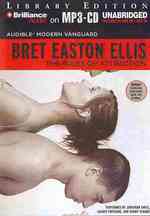- ホーム
- > 洋書
- > 英文書
- > Literary Criticism
Full Description
Ideological debates about economics and aesthetics raged hotly in nineteenth-century France. French political economy was taking shape as a discipline that would support free-market liberalism, while l'art pour l'art theories circulated, and utopian systems with aesthetic and economic agendas proliferated. Yet, as this book argues, the discourses of art and literature worked in tandem with market discourses to generate theories of economic and social order, of the model of the self-individuating and desiring subject of modernity, and of this individual's relationship to a new world of objects. Baudelaire as a poet and art critic is exemplary: Rather than a disaffected artist, Baudelaire is shown to be a spectator desirous of both art and goods whose sensibilities reflect transformations in habits of perception. The book includes chapters on equilibrium and utility in economic and aesthetic theory, on the place of the aesthetic in press coverage of the industrial exhibitions, on the harmonic theories of Baudelaire's early art criticism, aimed at a bourgeois audience, on Baudelaire's radical cosmopolitanism learned through viewing "objects" on display at the Universal Exhibition of 1855, and on Les Fleurs du Mal and Le Spleen de Paris, where language makes visible the traits of a new material world.
Contents
Acknowledgments
Introduction
Equilibrium and Utility: Measures of Desire
Spectacles of Consumption: Art and the Industrial Expositions
Baudelaire's Salon de 1846 and the Education of the Bourgeois Viewer
Baudelaire after 1848: Towards a Cosmopolitan Aesthetic
Products of Desire in Les Fleurs du mal
A Subjectivity of Things: Le Spleen de Paris
Afterword
Works Cited
Index








